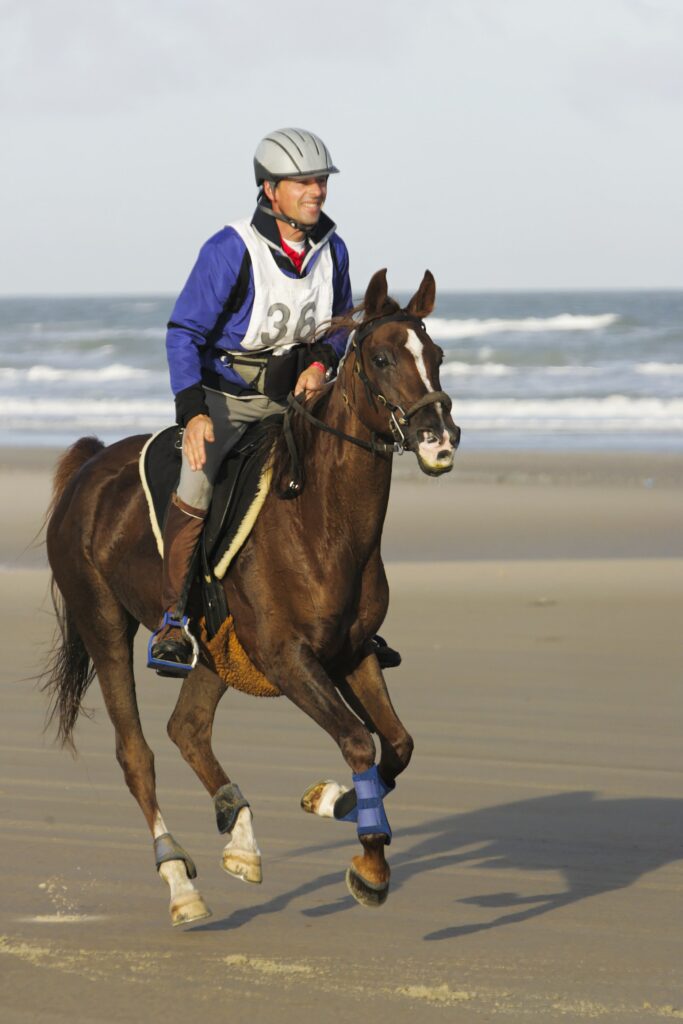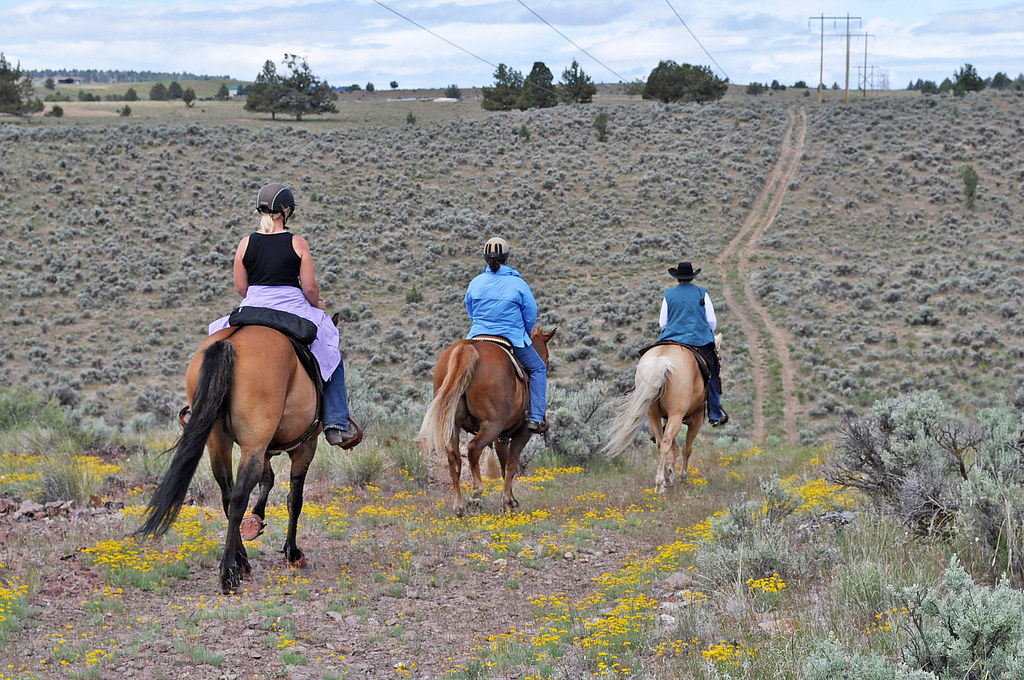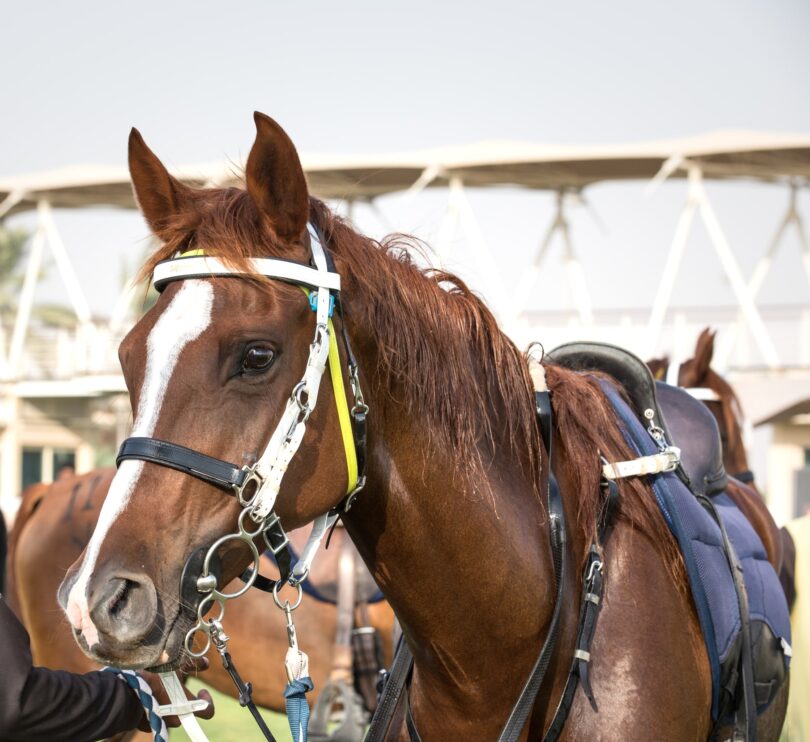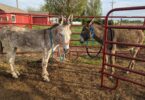A Guide to Getting Started
I’ve been fortunate enough to participate in some incredible endurance rides in breathtakingly beautiful places. What I love about endurance is that it allows me to discover new landscapes while challenging me and my horse in a way that focuses on doing our personal best.
Regardless of what horse or tack you own, endurance riding is a great way to discover your potential while exploring new routes and meeting like-minded people. Keep reading to find out exactly what an endurance ride entails and how to get started.

credit: istock
What is Endurance Riding?
Endurance riding is a long-distance event covering anywhere between 25 and 100 miles. Although endurance rides are timed, the emphasis is more on managing the horse and its pace over varied terrain rather than simply covering the distance as quickly as possible.
Veterinarians perform regular checks and holds to ensure the well-being of the equine competitors.
The winner is the one to complete the distance and pass the vet check in the fastest time.
An Overview of the Sport
Most endurance rides start early in the morning, with competitors arriving the day before and camping at the ride location overnight. Horses are vetted upon arrival to ensure they’re fit and sound enough to compete.
Any horse failing this inspection will be immediately eliminated.
Vet checks occur throughout the ride, usually at 40 km (approximately 25 mile) intervals.
At these checks, a veterinarian will assess the horse’s hydration levels, gut sounds, heart rate, muscle tone, gait and soundness, and general well-being. If a horse fails to meet these parameters, it will be vetted out and fail to complete the ride.
Although certain breeds tend to dominate competitive endurance riding, you can compete on any breed of horse or pony, or even a mule!
The most critical factor for the rider is understanding the capabilities of their chosen mount and riding it in a manner that complements its natural abilities, ensuring the horse completes the distance in good condition.
History of Endurance Riding
The exact origins of endurance riding are unclear, although the International Federation for Equestrian Sports (FEI) maintains the sport was developed by the US Cavalry as a way to test the endurance and athleticism of their horses.
According to the FEI, the cavalry took their horses on “a five-day, 300-mile (483km) ride, with each horse carrying over 200 lbs (91kg).”
This training, the FEI maintains, was the beginning of endurance riding. However it only became a competitive sport in the 1950’s, when Wendell Robie rode from Nevada to California in under 24 hours.
Robie’s route subsequently became the internationally acclaimed Tevis Cup or Western States Trail Ride.
Some early races, like the 360-mile “The Distanzreitt” held between Berlin, Germany, and Vienna, Austria, took a heavy toll on their competitors, with many horses dying either en route or shortly after completion. It was only much later, in 1913, that race organizers started to tackle issues of cruelty and introduced dedicated rest stops into these long-distance events.
Despite that, it wasn’t until much later that national and international standards and rules were introduced for endurance rides. Even today, these rules and standards vary from country to country, although rides overseen by the FEI are consistent in terms of distance, vetting procedures, and qualifying criteria.
Wondering how far can a horse travel in a day?
Getting Started in Endurance
What to Expect At Your First Ride
In the US, endurance rides are monitored by the American Endurance Ride Conference (AERC), ensuring they meet all safety requirements and prioritize the well-being of the competing horses.
Rides distances can range from introductory rides of 22.5 miles or less, to Limited Distance rides of 25 miles, up to more challenging rides covering between 50 to 100 miles.
The routes are marked, and the organizers will provide competitors with maps of the routes.
The longer rides usually consist of a series of loops, each of which ends at the start of the ride.
After completing each loop, you have 30 minutes to bring your horse’s pulse down to the ride’s required pulse criteria (usually 64 bpm). Once his pulse is down, you present your horse to the vet for a comprehensive health check, covering soundness, hydration, and heart rate.
You will need to trot your horse out to complete this examination, so it’s well worth practicing this at home to avoid any embarrassment on the day of! This video gives some handy tips on trotting up an endurance horse.
If your horse fails the vet inspection, you won’t be allowed to continue onto the next loop, or if you’ve completed your ride, you won’t earn a completion certificate.
Once you’ve passed the vet check, you and your horse will be given a mandatory rest period. This usually lasts for 30 minutes, giving you the chance to feed and water your horse before continuing on the next loop.
What Breeds Can Compete at Endurance?
Any horse can compete at endurance, provided it’s in good health, sound, moves efficiently, and has a basic level of fitness. Most horses can complete a 25 km ride with minimal training, especially if they live out on pasture.
Although Arabians and Arabian crosses tend to dominate the competitive sport of endurance riding, many other breeds complete rides successfully and competitively.
Size doesn’t matter either, as Kyla Law proved when she completed the 100-mile Tevis Cup ride on her 11.2hh Hackney pony, Flash. Mules also compete successfully at long-distance events, with their stamina and sure-footedness making for their comparative lack of speed.
Other breeds that do well at endurance include Tennessee Walkers, Fresians, Quarter Horses, Mustangs, and Morgans.

Source: Canva
What Equipment Do I Need for Endurance?
You don’t need any specialist equipment to compete in endurance. Endurance riders use a variety of tack, including English, trail, and Western saddles.
As long as your saddle fits your horse correctly and covers plenty of surface area, you can compete in it. Avoid any saddle that causes pressure points or rubs as these may result in your horse failing his vet inspection.
Many endurance riders prefer biothane bridles because they are water-resistant and won’t absorb sweat like leather bridles. Biothane is also strong, doesn’t crack, and is much easier to clean and maintain than leather. If you’re just starting out, a leather bridle will do just fine, provided it fits correctly.
How Do I Get My Horse (and Self) Fit for Endurance?
If you’re riding for an hour or so two to three times a week and squeezing in a longer ride at the weekends, your horse should be fit enough to complete a 25km without any further conditioning.
To check your horse’s fitness levels, ride him at a walk and trot, with short intervals of canter, for around an hour, ideally over varied terrain.
Once you complete your ride, check his pulse. A fit horse’s heart rate will decrease to under 60 bpm within 15 minutes of completing the ride.
Don’t forget your own fitness either! If you have a groom or friend helping you exercise your horse, you might want to consider incorporating some cardio and strength training into your schedule.

Source: Flickr
Entering Your First Endurance Ride
Once you feel you and your horse are ready, look around for an American Endurance Ride Conference (AERC) event nearby. An intro ride or 25 km competition is ideal for rookies.
You may even want to volunteer at an event beforehand to gain a better understanding of the AERC rules, endurance riding etiquette, and the general lay of the land.
Don’t be intimidated, though. Endurance riders are a friendly bunch, most of whom are more than happy to show you the ropes and give you a helping hand.
Notable Endurance Rides
As you get more miles under your belt, you’ll find new challenges. You might, for example, want to train for the Western States Trail Ride, or Tevis Cup, where horses and riders cover 100 miles between Tahoe and Auburn.
Alternatively, you could venture further abroad and enter Australia’s Tom Quilty Gold Cup or even South Africa’s Fauresmith, which covers 202 km (125 miles) in three days.
Benefits of Endurance Riding
You’re always a winner when you compete in endurance. It doesn’t matter if it takes you two hours or 12 to complete the ride, you’ll experience a great sense of achievement once you cross the finish line.
Covering long distances over varied terrain also helps you build a strong bond with your horse. As you tackle different obstacles, you’ll become more familiar with your horse’s athletic abilities and more confident in his ability to tackle challenges like steep inclines and river crossings.
Not only is endurance riding good for your confidence, but it also makes you a stronger, more stable rider while improving your horse’s cardiovascular fitness and muscle tone.
Frequently Asked Questions
Q: What is considered an endurance ride?
Technically, an endurance ride is one that is timed and covers a large distance in a single day. Endurance rides range from 80-160 km.
Q: What is the meaning of endurance riding?
Endurance riding is the sport of racing horses over long distances, usually 50-100 miles.
Q: How do you start endurance riding?
Like most activities, the best way to get into the sport is to start by doing a lot of research! There are great resources available both online and in print. Next, you can look for a local organization to join and volunteer at an event so you can see it in person.
If you like what you see, start slowly building up both your own fitness and your horse’s fitness levels.
Q: What is the difference between trail riding and endurance riding?
Endurance riding involves horse and rider teams competing over a set distance; the fastest time wins. Competitive
Parting Thoughts
If you’re already riding trails but would like more of a challenge, why not try your hand at endurance riding? It’s a great way to improve your horse’s fitness (and your own) while discovering new places and making new friends.
For more information about getting started in endurance, check out the AERC’s website.
P.S. Enjoy this article? Trot on over to:
- The Equine Need for Speed: Fastest Horses Revealed
- Equine Odometers: How Far Can Horses Travel in a Day?
- Speed Demon: What Running a Horse Really Means
- The Beginner’s Breed Breakdown: 5 Types of Horses
- Are you Really Ready for a Green Broke Horse?
- 5 Best Breeds for Barrel Racing In the Money
- The Fascinating Science Behind Horse Sweat








